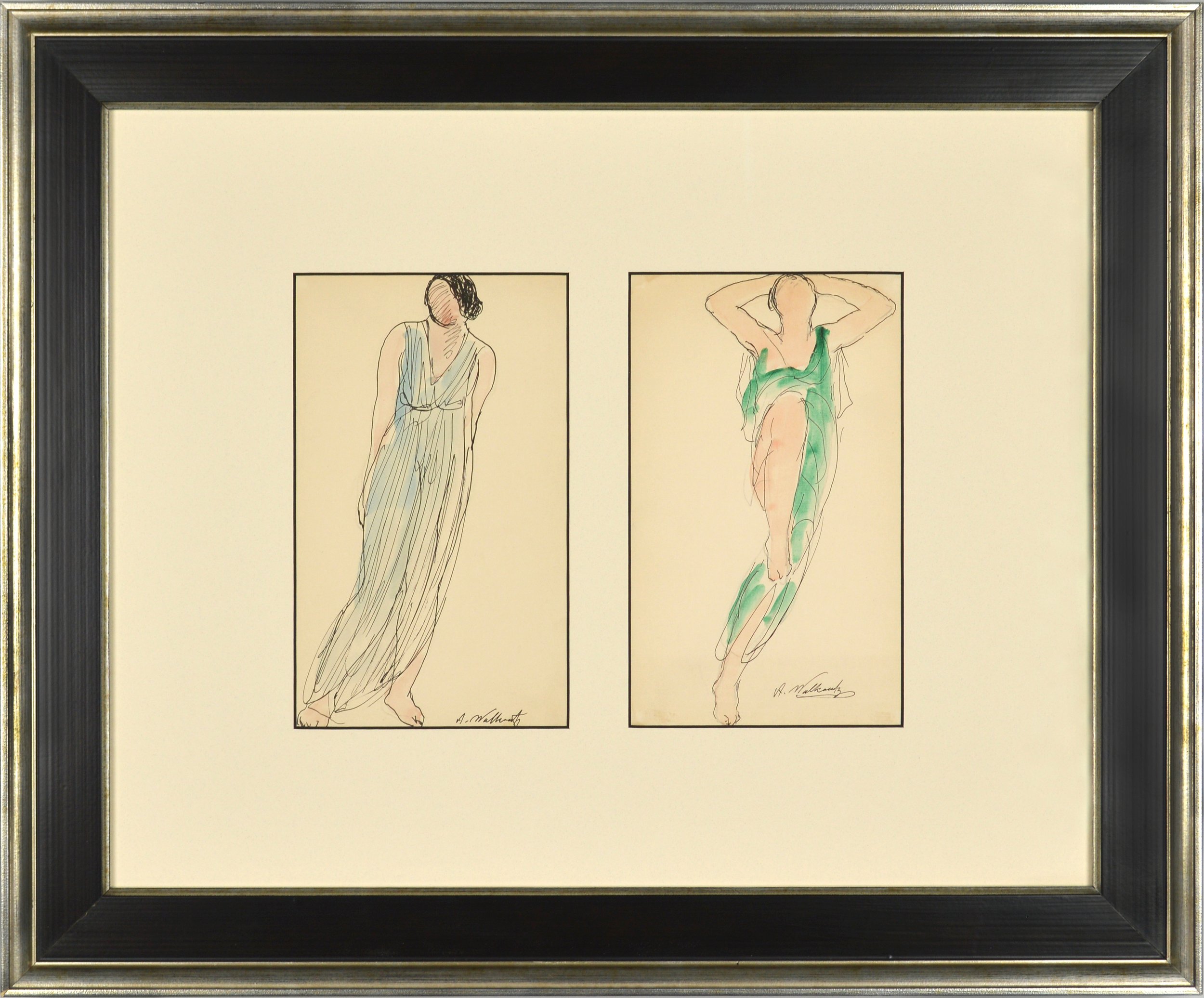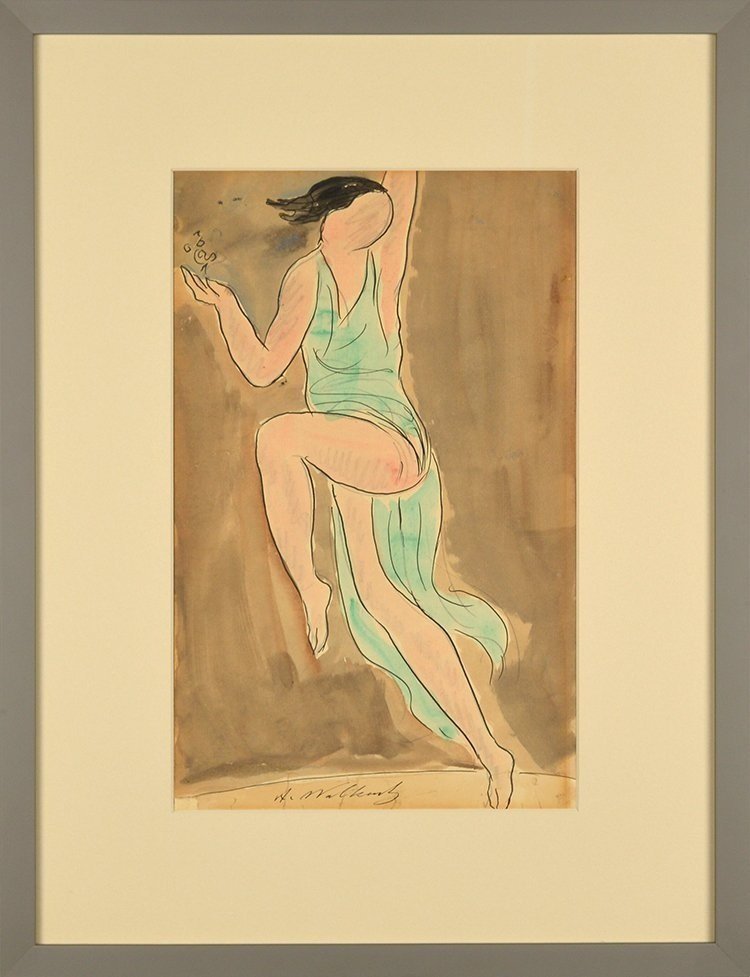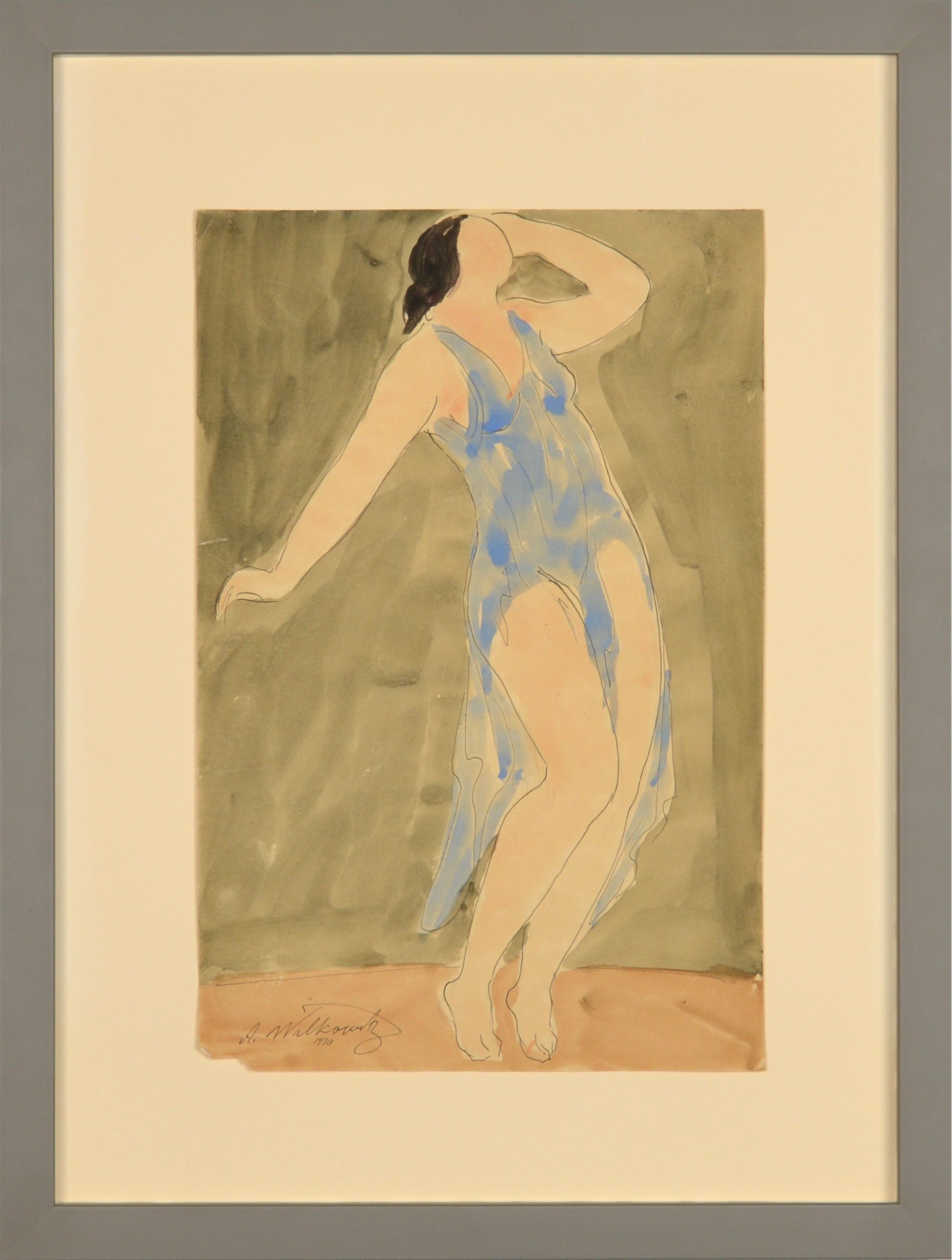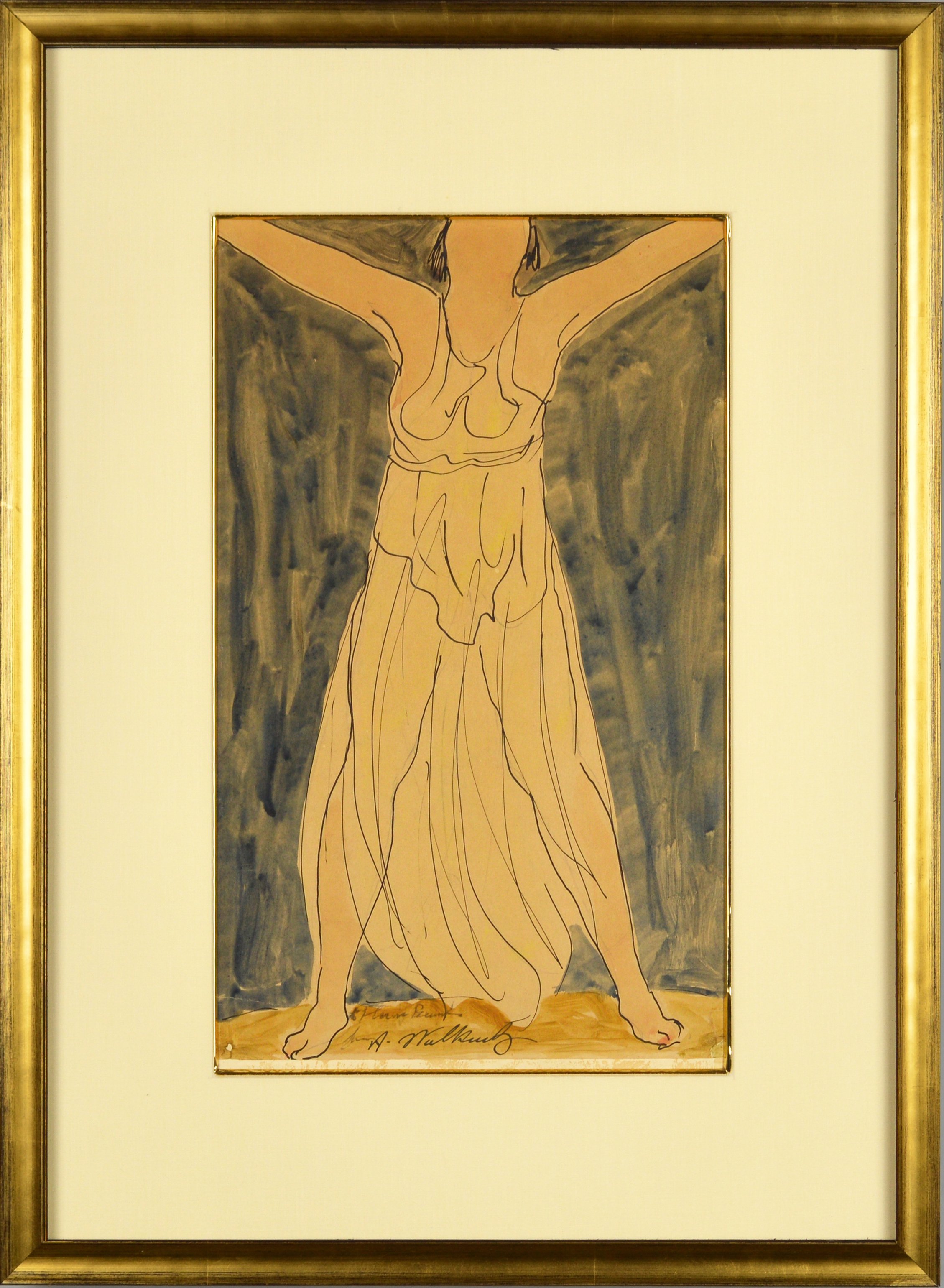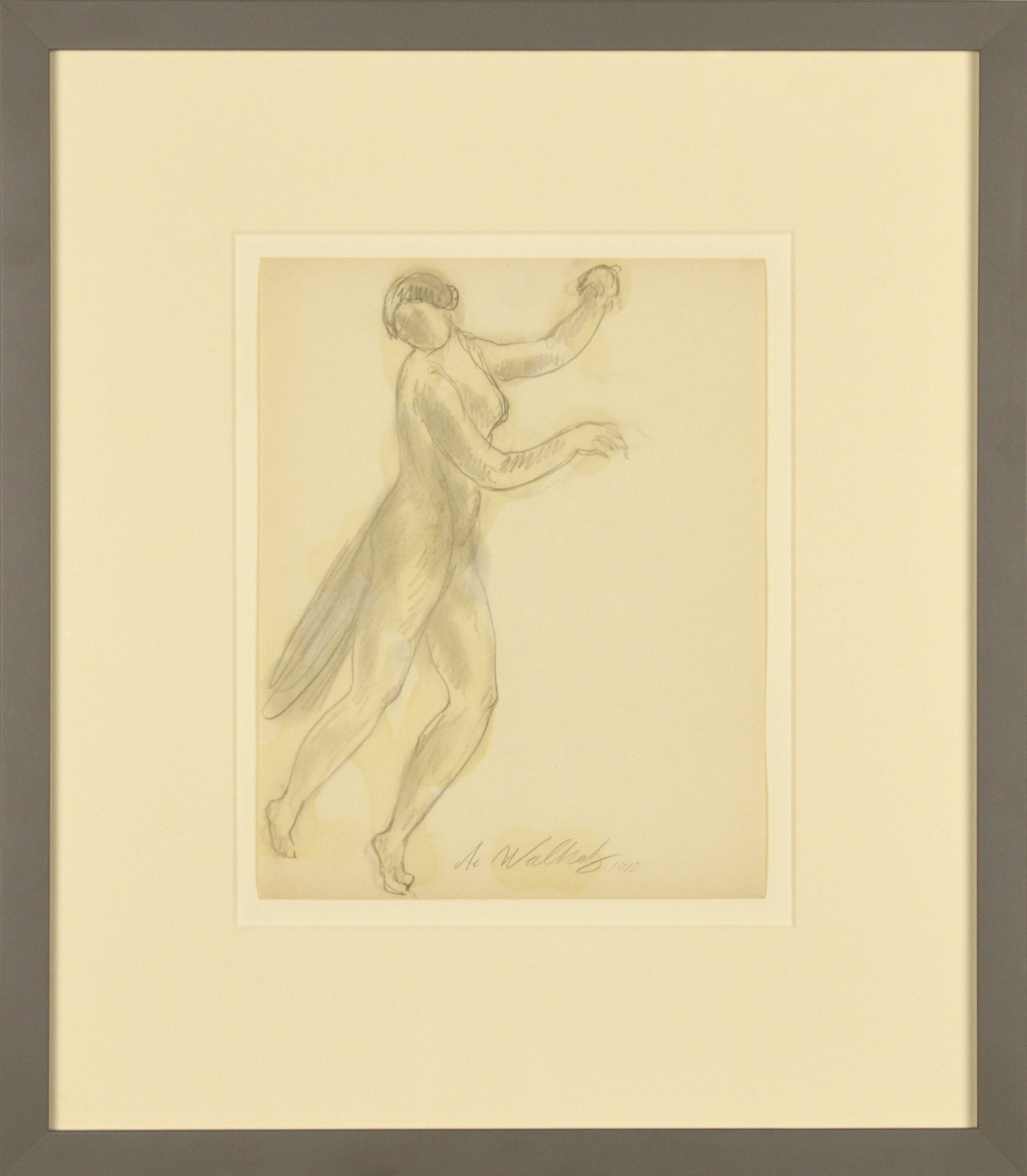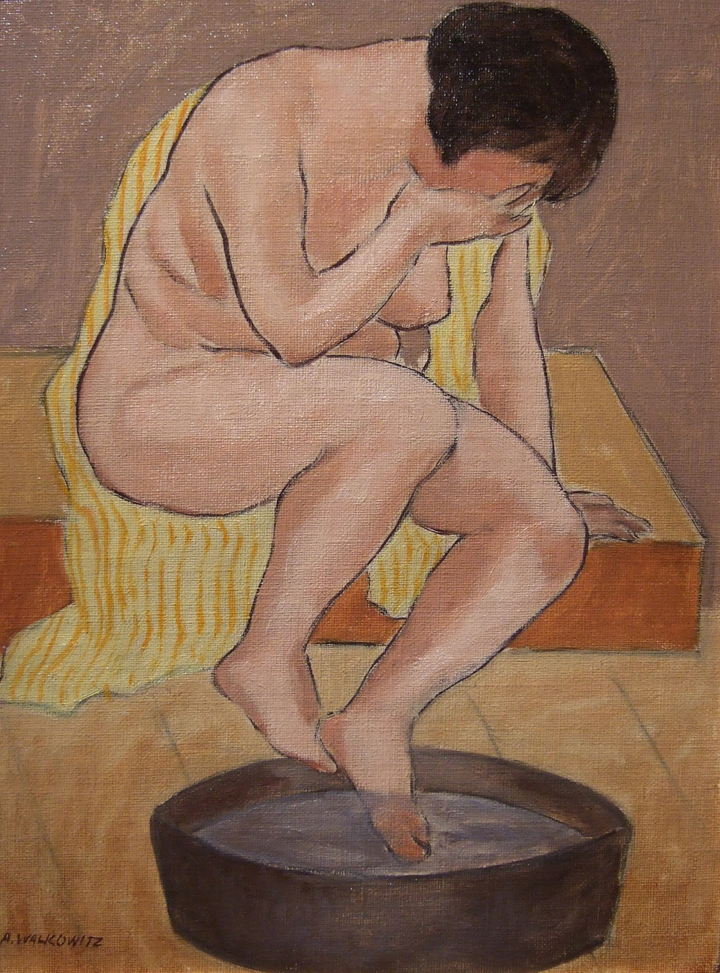Abraham Walkowitz (American, b. Russia, 1878-1965)
Abraham Walkowitz (1878-1965) was a pioneer of modern art in the United States: his work was included in the groundbreaking 1913 Armory Show in New York and he was a frequent exhibitor at Alfred Stieglitz’s Gallery 291. Best known for the series of over 5000 abstract watercolors he created of modern dancer Isadora Duncan, Walkowitz said of his practice “I am seeking to attune my art to what I feel to be the keynote of an experience.”
Born in Siberian Russia, Walkowitz immigrated to the U.S. in the late 1880s following the death of his father, a rabbi and cantor. He and his family settled in the Lower East Side of New York. He sold newspapers to support his family and took art classes at the Educational Alliance, Cooper Union, and the National Academy of Design. After saving up enough money, Walkowitz took a trip to Paris in 1906 that would alter the course of his life and art. There he befriended Max Weber, who introduced him to Picasso, Matisse, and, consequentially, Isadora Duncan, who Walkowitz met in the studio of Auguste Rodin.
The influence of Fauvism and Cubism could be felt in Walkowitz’s art after he returned to New York City in 1907. People and cityscapes alike were flattened and abstracted, and his lines vibrated with life and rhythm. His first exhibition at the Haas Gallery caught Stieglitz’s eye, who placed his work alongside Arthur Dove and John Marin in subsequent exhibitions, and earned him the ire of critics of modern art writ large (“He is as weird as the worst of them,” one wrote). But as Walkowitz produced more abstractions of Isadora Duncan — capturing the essence of her flowing, organic motion as few artists had before — the praise became more abundant and effusive: “You have actually recorded her movement much more truly than a moving picture camera could have done”; “He draws his pencil on paper with the same spirit of purity as a virtuoso violinist draws his bow over the string.”
In the mid-1940s, Walkowitz undertook a personal experiment: he sat for 100 well-known artists, each of whom rendered his portrait, to test his theory that “an individual sees everything through his own personality.” The finished pieces made up an exhibition at the Brooklyn Museum titled One Hundred Artists and Walkowitz, as well as in an article in Life.
